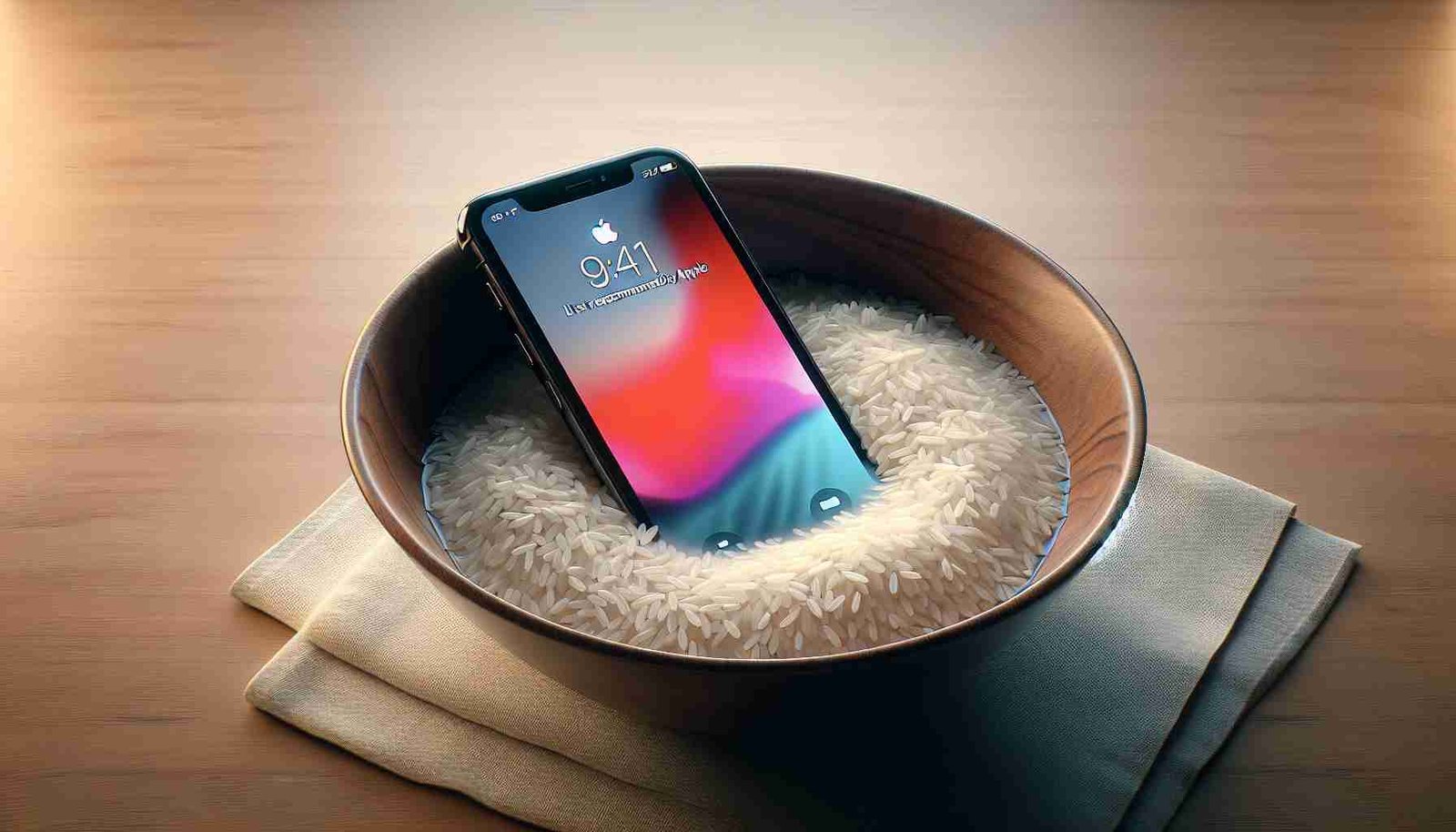In a significant update that has caught the attention of iPhone users worldwide, Apple has officially advised against the long-standing practice of placing wet iPhones in rice to dry them out. This traditional home remedy, believed to absorb moisture and salvage water-damaged devices, is now under scrutiny by the tech giant for potentially causing more harm than good.
Key Highlights:
- Apple warns that using rice to dry out wet iPhones can introduce small particles into the device, leading to damage.
- The company recommends tapping the device gently to remove excess liquid and leaving it in a dry area with airflow instead.
- Charging wet iPhones is discouraged due to the risk of corrosion and connectivity issues.

Apple’s guidance comes amidst a backdrop of common mishaps involving smartphones and water, where users instinctively resort to rice as an emergency fix. However, this method’s efficacy and safety are now questioned, prompting a reevaluation of best practices for dealing with water-damaged electronics.
According to Apple, the rice drying technique might not only fail to remove moisture effectively but also poses a risk of introducing rice particles into the device, potentially harming internal components. The company outlines alternative steps for managing a wet iPhone, emphasizing the removal of excess liquid by gently tapping the device and allowing it to air dry in an environment with good airflow.
Moreover, Apple stresses the importance of avoiding charging the device while it is still wet, as this can lead to corrosion of the pins in the Lightning or USB-C connector, resulting in permanent damage or functionality issues. This caution extends to avoiding the use of external heat sources or compressed air for drying, as well as refraining from inserting anything into the connector that could cause further damage.
Apple’s updated advice marks a departure from traditional wisdom, underscoring the need for careful handling of water-damaged electronics and highlighting the limitations of home remedies like the rice method. The company’s recommendations aim to ensure the longevity and proper functioning of iPhones, even in the face of accidental water exposure.
The crux of this update from Apple is not just about debunking a popular myth but also about promoting safer, more effective ways to manage and recover from water damage. By advocating for gentle, non-invasive drying methods and cautioning against risky practices, Apple is guiding users towards preserving their devices’ integrity and functionality without resorting to potentially damaging quick fixes.
In conclusion
This shift in guidance reflects a broader commitment to device safety and user awareness, encouraging iPhone owners to adopt practices that safeguard their technology against common hazards. The move away from rice as a go-to solution not only challenges conventional wisdom but also aligns with a more informed approach to electronics care, emphasizing prevention, careful handling, and adherence to manufacturer recommendations for optimal outcomes.


















